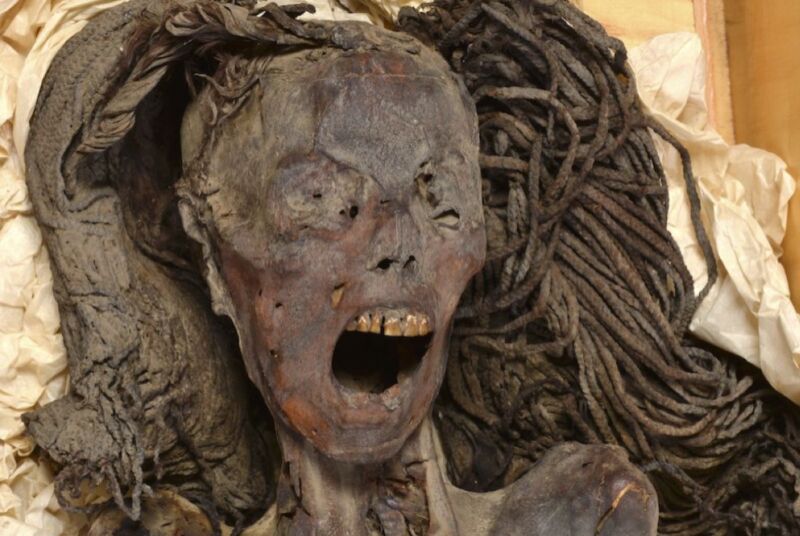“Screaming Woman” mummy may have died in agony 3,500 years ago, study finds

Enlarge / CT scans and other techniques allowed scientists to “virtually dissect” this 3,500-year-old “Screaming Woman” mummy. (credit: Sahar Saleem/CC BY)
There have been a handful of ancient Egyptian mummies discovered with their mouths wide open, as if mid-scream. This has puzzled archaeologists because Egyptian mummification typically involved bandaging the mandible to the skull to keep the mouth closed. Scientists have “virtually dissected” one such “Screaming Woman” mummy and concluded that the wide-open mouth is not the result of poor mummification, according to a new paper published in the journal Frontiers in Medicine. There was no clear cause of death, but the authors suggest the mummy’s expression could indicate she died in excruciating pain.
“The Screaming Woman is a true ‘time capsule’ of the way that she died and was mummified,” said co-author Sahar Saleem, a professor of radiology at Cairo University in Egypt. “Here we show that she was embalmed with costly, imported embalming material. This, and the mummy’s well-preserved appearance, contradicts the traditional belief that a failure to remove her inner organs implied poor mummification.”
Saleem has long been involved in paleoradiology and archaeometry of “screaming” Egyptian mummies. For instance, she co-authored a 2020 paper applying similar techniques to the study of another “Screaming Woman” mummy, dubbed Unknown Woman A by the then-head of the Egyptian Antiquities Service, Gaston Maspero, and one of two such mummies discovered in the Royal Cache at Deir el Bahari near Luxor in 1881. This was where 21st and 22nd Dynasty priests would hide the remains of royal members from earlier dynasties to thwart grave robbers.
